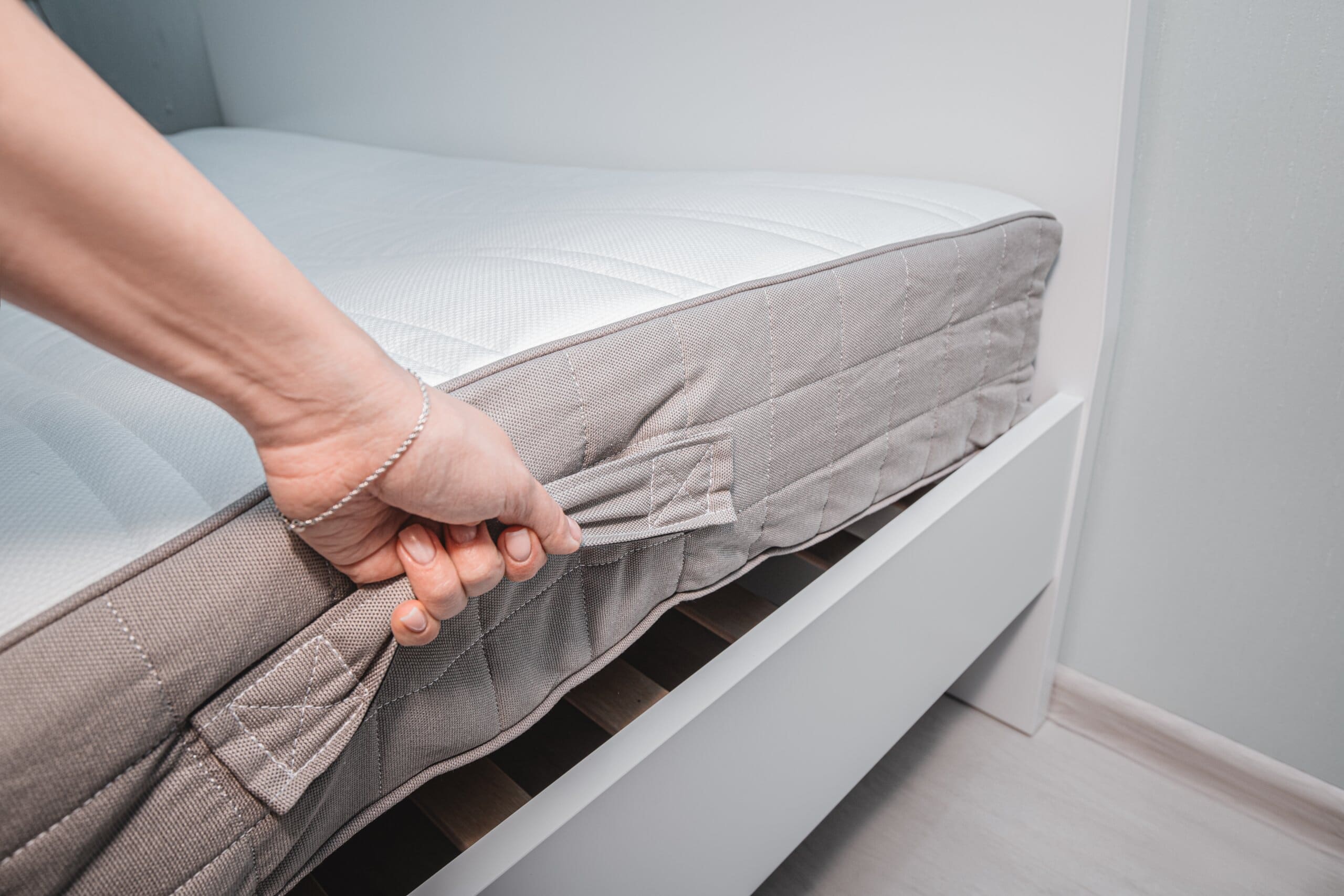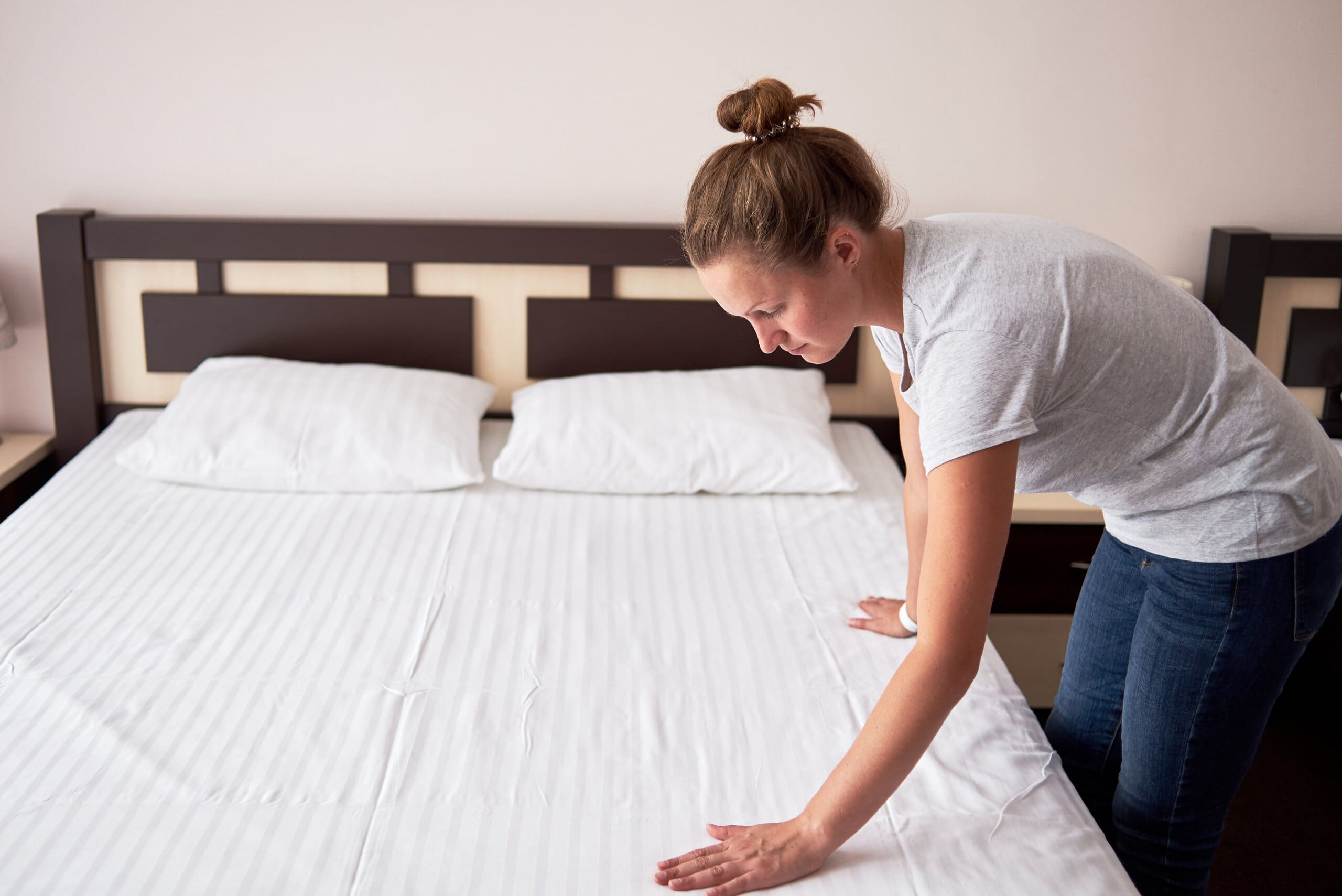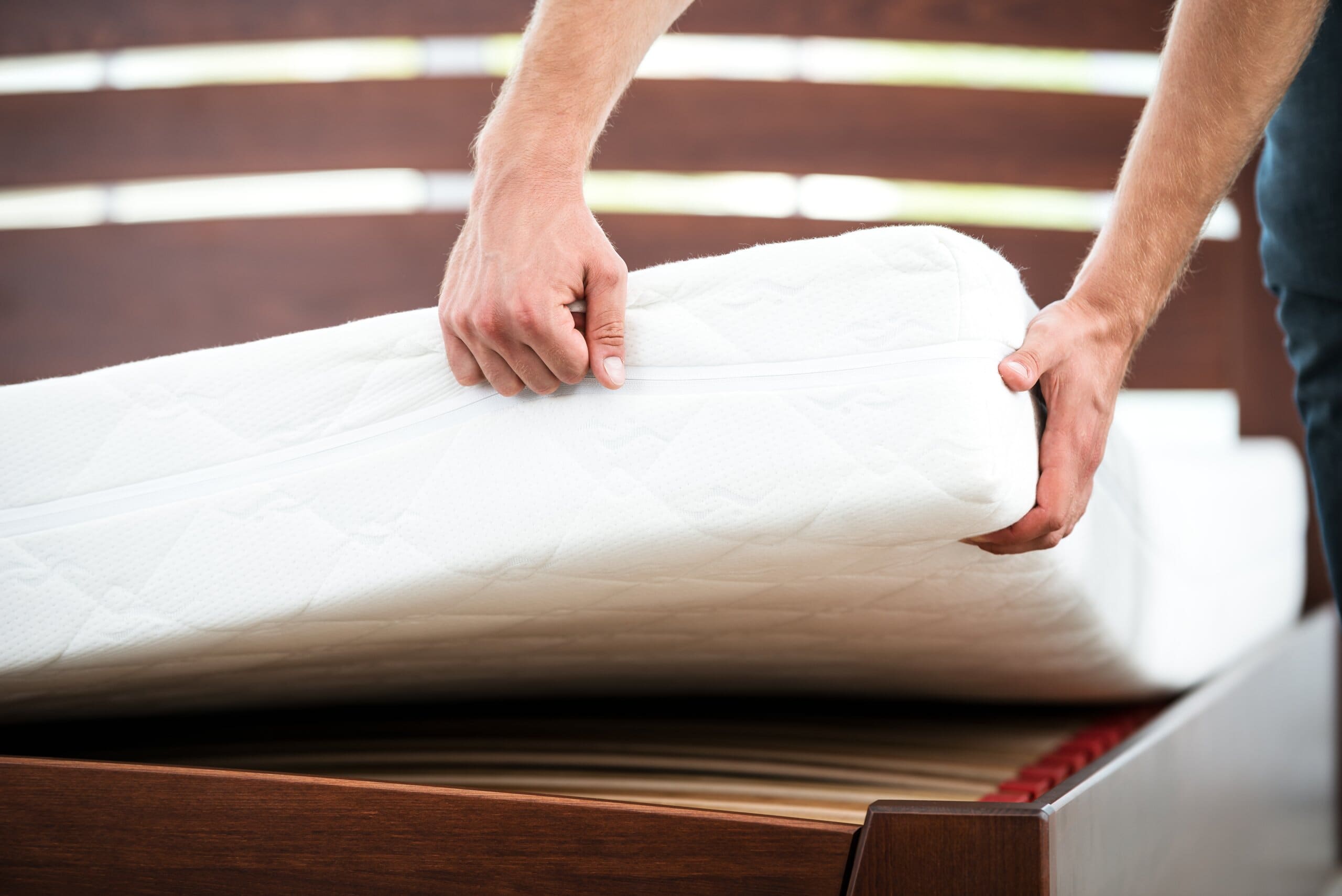Last updated: July 2025
How Often Should I Flip Or Turn My Mattress?
How often should you flip or rotate your mattress? Here's everything you need to know.
Looking for more information on how often should you flip or rotate your mattress? Here's everything you need to know about this area of mattress care.
Anyone who’s ever bought a mattress probably knows that flipping or rotating it throughout the year is recommended as part of your mattress care routine. But we’d probably also wager that you forget to do this task from time to time (don’t worry—we’re all guilty of this).
However, while one missed flip or rotation won’t hurt your mattress in the long run, regularly flipping or rotating the heart of your bed is a must if you want your mattress to last well past its suggested lifespan.
Essentially, rotating and flipping your mattress ensures you're sleeping in a different spot on your bed every few months, rather than the same squishy (albeit comfortable) dent, which helps to prevent mattress sagging.
But with recent developments in mattress technology, you probably know that you can’t flip or rotate all mattresses, which begs the question: “Should you rotate your mattress, flip it, or both?”
To help answer the question of how often should you flip your mattress, and whether or not you even have a flippable mattress to begin with, we’ve covered all the essential details around how to rotate or flip a mattress, below!

What is the difference between flipping and rotating a mattress?
Nowadays, pretty much every type of mattress is different, with most modern mattresses typically being designed as rotation only rather than flip. Naturally, this means flipping a mattress that isn’t designed to be used on a particular side can damage its surface, not to mention void its warranty, so you want to avoid doing this if possible!
This also means that one of the most important things to note when buying your mattress is whether or not it’s a flip or rotation model. If it’s flippable, then you can both flip and rotate it. But if it’s rotate-only, then flipping is a big no-no!
Once your mattress has arrived and settled into your bed frame, you can prepare to rotate or flip in the following weeks and months. Here’s the difference between flipping and turning a mattress:
- Flipping – flip your mattress by turning it over to lay on the other side that was facing the floor. You can also rotate it 180 degrees as well should you wish to do so.
- Rotating – rotate your mattress by turning it 180 degrees so that the end where your feet used to lay is now at the head of the bed.
Tips for how to rotate a mattress
As we’ve already mentioned, the majority of modern-day mattresses are meant to be rotated unless the manufacturer specifically states otherwise in the product details. In almost all cases, your mattress will be rotate only if it falls under any of the following categories:
- Pillow top mattresses
- Hybrid mattresses
There are plenty of benefits to this type of mattress, which you can read about in our guide to what a no-turn mattress is, and are they better?
Why should I rotate my mattress?
At the end of the day, even the best mattress will eventually need to be rotated to even out wear and tear. If you constantly lie in the same spot for months, it will eventually conform to the shape of your body, and you’ll end up with dips and lumps that can ruin a good night’s sleep. While mattresses are designed to mould to your unique curvature, laying on the exact same spot for months on end can leave you with a deeper compression than intended.
Turning your mattress regularly, on the other hand, allows the memory foam or springs to recover and regain their original shape. As a result, regularly rotating a mattress increases its longevity, all while keeping your spine in that all-important neutral position to prevent pressure points, back pain, neck aches, muscle stiffness, and more!
How often should I rotate my mattress?
The question of ‘how often should I rotate my mattress’ varies between manufacturers, but the general consensus is that you should turn your mattress at least every three to six months to avoid uncomfortable lumps, bumps, and dips forming.
However, it’s important to note that older mattresses should be turned more often to account for their weakened support systems, while new mattresses may need to be turned every month or a few weeks for a set period of time until the fillings have finally settled.

Which mattresses can’t be rotated?
Although most mattresses are rotation-friendly, some mattresses can’t be rotated because they’ve been designed for a specific purpose with special features. For example, zoned comfort support mattresses provide extra support to certain areas like hips and shoulders while feeling softer in other areas.
This means that, if you rotate this type of single-sided mattress, your body will be missing out on these features, which can result in a worse night’s sleep and less comfort until you rotate it back to its original direction.
How do I turn my mattress?
The goal behind rotating your mattress is for the mattress to make a 180-degree turn without flipping over. To make this as easy as possible, we recommend rotating your mattress in the following way:
- Before you start, move any furniture away from the bed to create a clear space.
- Next, using the handles provided on the mattress, test that you can manage the weight. Some mattresses are heavier than they look, so if you can’t manage the weight, get someone to help you rotate the mattress.
- From here, slowly pull or lift your mattress away from the headboard and pivot it 180 degrees, until the head of the mattress is now at the foot of the bed. And that’s it, you’re done!
For maximum mattress rotation benefits, you can plan out your turns for the year ahead to make sure you're always on time with your rotations. And remember, if you have a slatted bed frame, make sure all the slats are in place before laying on the bed to avoid discomfort.



Tips for how to flip a mattress
In the case that your mattress manufacturer flags your mattress as flippable or double-sided, this likely means that your mattress needs to be fully flipped over at regular intervals. This also means you’ll need to put a bit more effort in whenever your mattress needs to change position.

Why should you flip your mattress?
Much like rotating your mattress, regularly flipping your mattress prevents permanent body impressions and mattress sagging in one area, ensuring your weight is spread evenly across your mattress for longer.
How often should I flip my mattress?
Similarly to rotating your mattress, you should flip your mattress once every six months. However, you should check any information that came with your mattress including labels, which will give guidance on how often you should flip it.
If you no longer have the mattress care information, you can look up your mattress online, and there should also be information in the mattress’ warranty booklet.
Which mattress types can’t be flipped?
Generally speaking, no-turn mattresses are any mattresses flagged by the manufacturer as rotation only. These mattresses are not designed to be turned over, and resting on the non-comfort side will typically damage your mattress’s materials and support systems.
How do I flip my mattress?
If your mattress is double-sided then you can flip it over regularly. To make this as easy as possible, we recommend flipping your mattress in the following way:
- Strip the bed and make sure the area around the bed frame is clear. If necessary, move the bed frame away from the wall so it doesn’t damage either the bed or the paintwork/wallpaper while you move your mattress.
- Taking your mattress’s turning handles or base, position your mattress so that the end is hanging over the bottom of the bed frame. Then raise the mattress up on its long edge, supporting the corners as you do so.
- From here, gently lower your mattress into place so that what was the underside is now facing you.
Like rotatable mattresses, heavy or large flip mattresses, like double mattresses and king-size mattresses, can be difficult to move properly on your own, so it’s best to ask for help if you’re struggling to avoid injuring yourself or damaging your mattress.



Turn and no-turn mattresses in our range
And there you have it! With all those pointers, you should hopefully have no trouble turning or flipping your mattress in the future. Remember, changing your mattress's position every so often is vital for extending its lifespan, but if you’ve been flipping your mattress for years and find that it’s still sagging, then it may be time for a new one from our range!
Whether it’s a brand-new double mattress for your master bedroom, or a comfy single for your guest bed, knowing how often to change your mattress is a must for enjoying a good night’s sleep.
And speaking of sleep! If you want more advice on bed buying and sleep guidance, don’t forget to check out our Buying Guide hub and Snooze News sleep blog for more insightful pieces like this one!
However, if you have more questions about how to turn or flip your mattress, take a look at our FAQs below:
Mattress turning and flipping FAQs
Here, we answer the most common questions about mattress turning and flipping.
Can you flip a memory foam mattress?
No, you cannot. Memory foam mattresses, especially foam-only mattresses, have a foam layer on the top side. Flipping it over means that you’ll be lying on the uncomfortable side that hasn’t been designed for sleeping on.
Instead, it's usually recommended to rotate it 180 degrees every three to six months to ensure even wear. For more information, you can read our Memory Foam Mattress Buying Guide.
How often should I turn my mattress if I’m the only person who sleeps on it?
If only one person is sleeping on a mattress, it still needs to be turned regularly to prevent lumps and dips from forming, especially if you consistently sleep in the same position.
Rotating the mattress will allow it to recover its original shape, but the frequency that you turn your mattress will also depend on other factors, including the size and weight of the sleeper, the age of the mattress, and mattress type.
Should I turn my mattress if one person is heavier?
The simple answer is yes. If one partner is heavier, then rotating your mattress more often will help to avoid dips and sagging. If there is a considerable difference in size and weight between the two partners, rotate the mattress every three months rather than every six months, and consider the best mattresses for heavy people.
Should I turn my guest mattress?
If your guest mattress and mattress topper are used sporadically rather than every night like your own, then you could rotate it once a year, depending on how often it is used. Alternatively, you may want to choose a sofa bed instead to avoid having to rotate your guest mattress at all.
Do I need to rotate my Emma mattress?
Yes, you should absolutely rotate your Emma mattress, but do not flip it. The manufacturer recommends that you rotate it once a month for the first six months, and then every three months after that.


